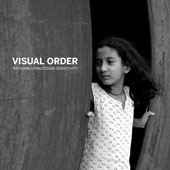Ideas and Thoughts:
As designers, our sole aim is to facilitate ease in communication for the viewer. Creating persuasive enquiry based approach to comprehend, sometimes a hidden visual order to lure the viewer or at times to guide him through a well-defined Visual Order.
Feeling and Reasoning:
The connect between design theory and application is difficult to grasp for a novice student of design, because the nature of design decisions are sometimes very subjective and contextual. Moreover, it becomes difficult, when the novice tries to seek rules or formulae to attempt solving of design problems. This does not necessarily mean that there are no rules in design. In fact, there are principles and concepts that need to be taught and internalized rather than rote learned. Design solutions are felt, experienced, compared and judged. They don’t conclude as absolutes in themselves, because each time the context differs. The designer trains himself to respond to contexts, based on the knowledge acquired while learning principles of Visual Design.
Giving reason acts as a convenient approach, to teach a skill, explain knowledge or a concept. Rationality also gets well accepted and appreciated. To act without a reason, seems uncomfortable and paints a picture of being artistic, intuitive or subjective. Maybe that is why, quantitative results seem more pleasing compared to qualitative, since they are easily articulated by a rational mind.
Visual Order as a method will face arguments in its nature of explaining a concept through reference to analogies; but such is the case as most of these tasks (design problems) are related with concepts to be experienced; rather than being taught or told about. Most of these tasks are analogous; i.e., understood by doing, seeing and comparing and not based on results, translated numerically. Comparison provides insights, not results, as they are based on learning through perception. (Otl Aicher 1994).
Design assignments today, are currently under pressure to rationalize and at times, reason out acts as an incentive to make someone work towards a goal. It is difficult for sense of exploration to flourish within such environments, as exploration is based on a foundation of interests, rather than reasons. The method presented here attempts new approaches to strike a balance between both modes of thinking (vertical + lateral).
Considering the current context, where choice of font is available at a mouse click, the exercises in Visual order become extremely important as they act as rudimentary level courses in instilling the concept of Visual Order in the minds of novice designers, with the aim of making them familiar with the nature of design decisions. While encouraging students to have a sense of exploration towards tackling design problems, the instructors can also answer the rationale queries of students through the use of analogies. It is this marriage of exploration and rationale that Visual Order is trying to achieve.

